Bringing home your chickens is an exciting time for everyone. Getting your hens settled in and watching them explore their new surroundings is great to watch. Finding your first egg from your hens is eggcellent, perhaps even better than eating it. Read on to find out how you can get your hens settled as quickly as possible and how to introduce your chickens to your other pets.
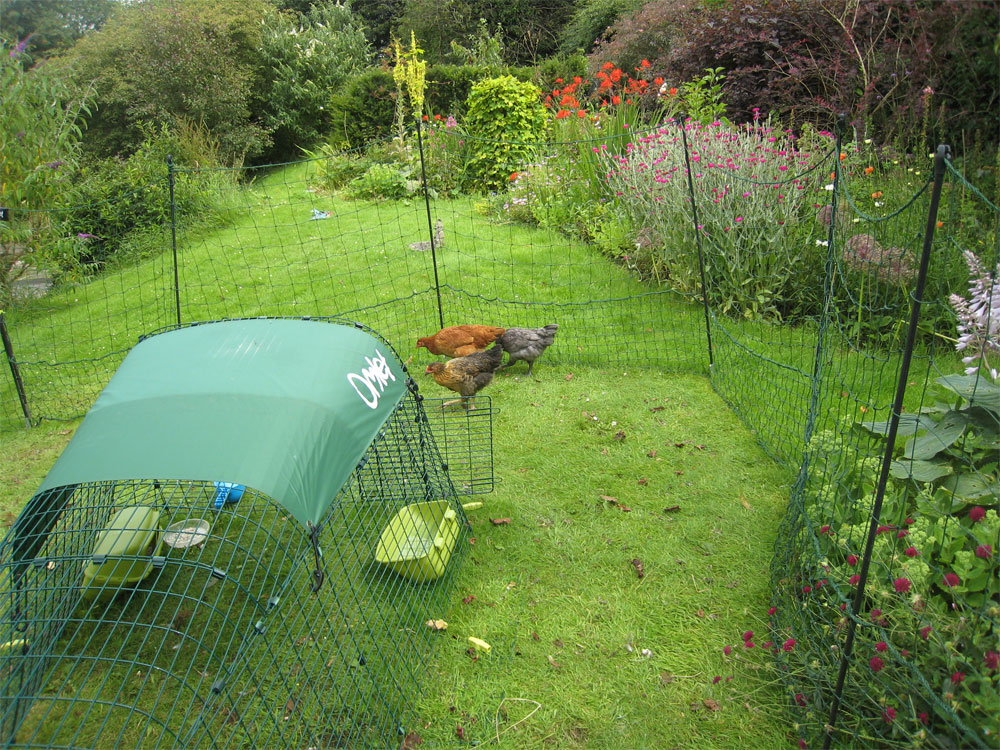
You can use the Omlet Chicken Fencing to keep your chickens out of your flower beds
Introducing Your Chickens To Their New Home
Having your chicken coop ready before the arrival of your hens is the best way to ensure a smooth arrival. You will probably have brought your chickens home in a cardboard box or pet carrier. When you get them home place this box in the coop open it up and allow them to jump out when they are ready. If they can’t get out themselves then gently lift them out.
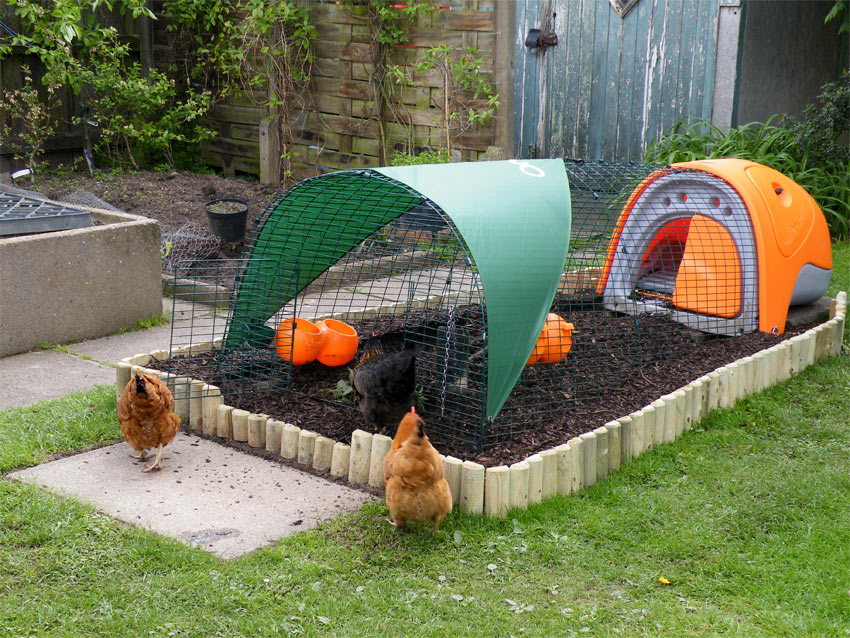
Introducing our chickens to their new orange Omlet classic chicken coop
You should keep your chickens shut into the coop run for the first day so they know where they need to go for food and water and at night time. If your coop doesn’t have an attached run then it is recommended that you keep them in the coop overnight. After the first day and night you can let them out into a bigger run, or to freerange. They should know where to get food and water. For the first couple of days you should check on them a few times a day to make sure they are ok. When you go to shut them away you will need to check they are inside.
Introducing Your Chickens To Other Pets
Try to avoid any introductions before your hens are completely settled, as they may struggle to relax in their new home if they are introduced to the dog too early. When we say other pets we are talking about the pets that your chickens will be sharing their garden with. There is certainly no need to introduce your hens to hammy the hamster or your pet fish. If you have cats or dogs then you will need to facilitate an introduction before the two can be left alone to potter about the garden.
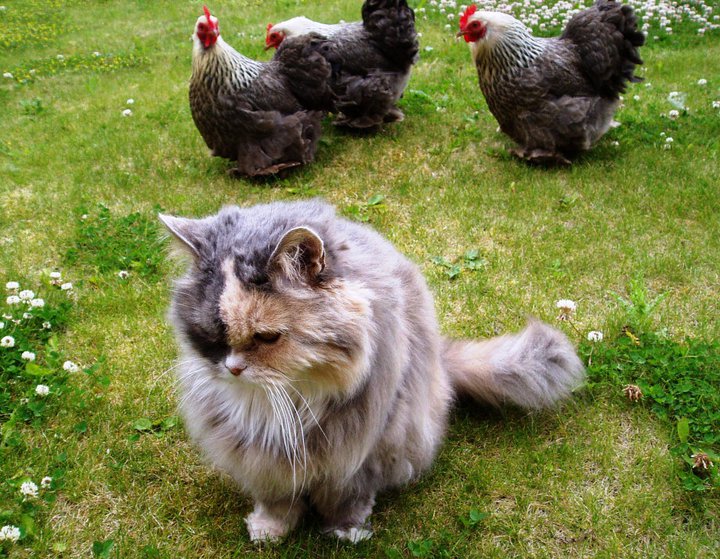
Introducing your new pet chickens to your cats and dogs can be very easy
Chickens will get along fine with cats and dogs and once they are used to each other they shouldn’t pay one another much attention. They will however need to be supervised by you until you are certain your chickens won’t be harmed by your pets.
Dogs
Your dog needs to know the basic ‘sit’ and ‘leave’ (or ‘no’) commands. First you should take your dog for a long walk to tire him/her out. then you can introduce them to the chickens. for the first introduction it is best to have your dog on the lead. This will allow them to get used to the chickens and you can correct any lurching or unwanted behaviour easily with a tug on their lead. Let your dog sniff the chickens if it wants to. It is more likely that your chickens will peck your dog on the nose than your dog harm them.
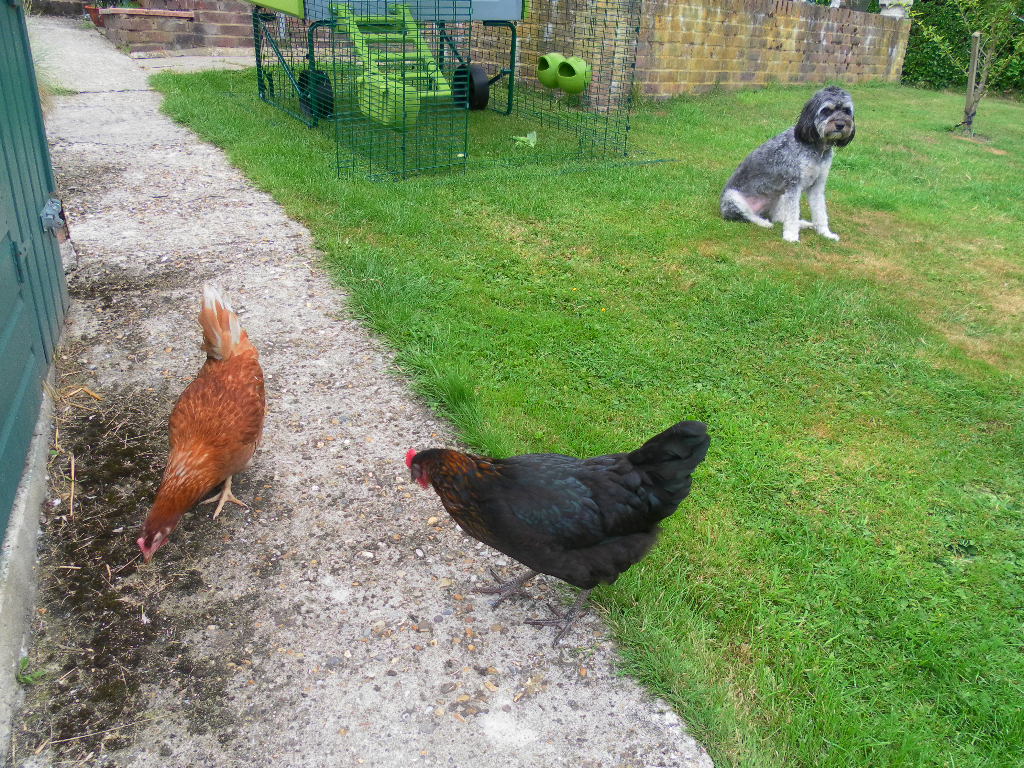
Martin Dungey's beautiful dog guarding their lovely hens
The second introduction should be left for the following day. For this introduction you should have your dog off the lead. Command your dog to sit, and then hold one of your chickens and gently put it on the floor. Stay close to make sure if your dog does go for the chicken you can intervene. Your dog will most likely sniff the chicken and decide that they aren’t that interesting. If your dog goes to chase or bite your chickens then you may have to consider building a run for your chickens that your dog can’t get into.
Cats
If you have cats then you needn’t worry about them going after your chickens. Chickens are fairly big and a cat won't be too interested in them. If they do seem interested your chickens will be able to stand up for themselves and will probably give them a peck. This will be enough for your cat to learn to give them a wide berth.
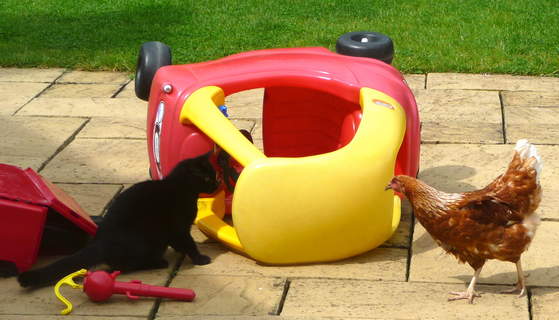
A lovely young black cat being introduced to an Omlet Gingernut Ranger hen
For the first introduction it is best to have your chickens in their run where the cat can’t get at them. Then you can place your cat near the coop to see if they will show an interest or not. You will probably find your cat will watch them for a while and soon get bored. This is a good reaction, as it indicates your cat will show no interest in them when they are free. After this you can then let your chickens out and supervise your cat and chickens.





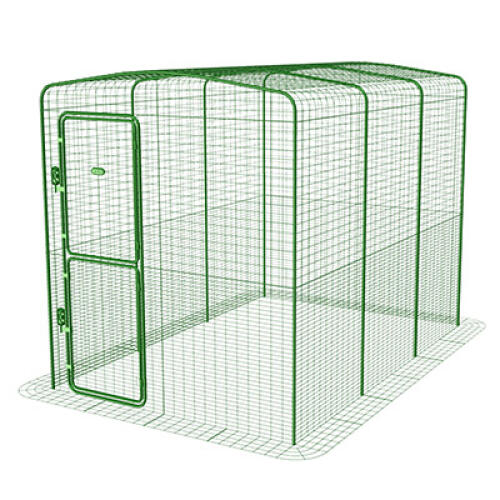
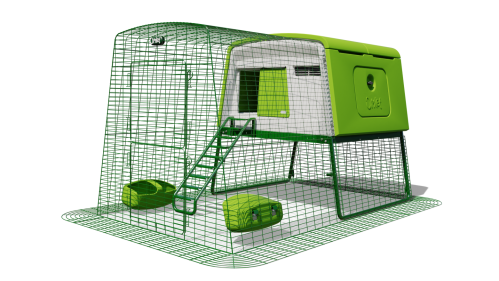
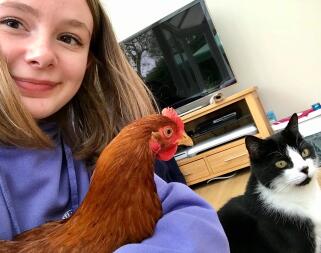
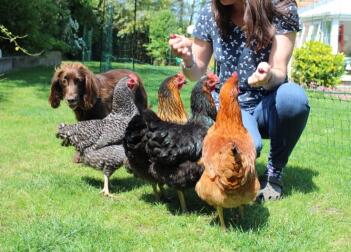
Comments
Jen, 6 April 2022
Are hybrid hens better for beginners and how can you tell what breed they are from. Would this be by the different colours?
Sally, 29 April 2020
I have just put the new chickens into the coop but they don't want to come out. Unsurprising as it's raining. Should I put some food in the coop, or will that just encourage them to stay here and never venture out? I don't want them to be in lockdown too!
Tia, 10 April 2019
I’m getting chickens tomorrow so please reply ASAP , I beg . After the first day and night having them locked in the coop getting used to the house with an attached coop, I have a bigger coop (fenced) and a big garden , can I let them run free in the garden in the morning after or do I have to get them used to the bigger coop for a whole day or can I just let them out the morning after the first day Thanks xx